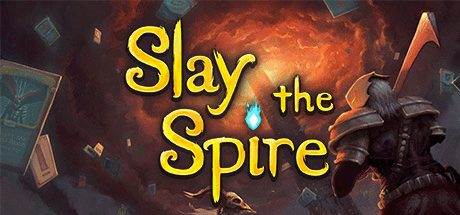In November 2017, ‘Slay the Spire’ quietly debuted on the Steam platform in early access form. As of today, this electronic card game that combines roguelike and deck-building mechanisms has not only achieved great success with its excellent quality but also almost created a game category – deck-building roguelike games, leading countless successors. This electronic game that draws nourishment from tabletop games also launched a tabletop game version in 2023.
The developers of ‘Slay the Spire’, Anthony Giovannetti and Casey Yanot, admitted that the deck-building mechanism of ‘Slay the Spire’ comes from the classic tabletop game ‘Dominion’, and the game mechanism was even inspired by the two-player card game ‘Android:Netrunner’ [https://www.rockpapershotgun.com/why-revealing-all-is-the-secret-of-slay-the-spires-success]. Launched in 2008, ‘Dominion’ is itself a pioneering work in the field of tabletop games in terms of deck-building mechanisms and is still one of the representative works even today. In ‘Slay the Spire’, electronic games and tabletop games once again collide with innovative sparks at the mechanism level. ‘Dominion’ has also launched an electronic version after nearly two decades of development. It now has 26 DLCs on the Steam platform – that is, expansion packs for tabletop games. From turn-based wargames to role-playing games, electronic games are born out of tabletop games and, relying on their computing power and excellent audio-visual performance, have developed game methods that tabletop games cannot reach. However, tabletop games are also constantly advancing with the times. Physical accessories and interaction between people have become important characteristics that cannot be completely replaced by electronic games. Up to now, the numerous and diverse mechanisms of tabletop games are still an inexhaustible source of inspiration for electronic games, especially indie games. The electronic game ‘Baldur’s Gate 3’, developed based on the tabletop role-playing game ‘Dungeons & Dragons’, vividly presents the original mechanisms such as action points, numerical checks, measuring movement, and plot choices. ‘Sid Meier’s Civilization VI’ even fuses tabletop game mechanisms such as fixed turn order, actions and events, technology tree, variable player ability racing, auctions, worker placement, and set valuation into one, directly declaring itself an electronic tabletop game.Perhaps it is the successful absorption and transformation of board game mechanics that has led to the creation of a specific card for the designer of the Civilization series, Sid Meier, in the civilization-themed board game ‘Through the Ages’. Not to mention electronic card games like ‘Hearthstone’, which are closely related to tabletop card games. Among the ‘Through the Ages’ greats, Sid Meier is prominently listed.
In addition to the mentioned ‘big productions’, independent games are an important field where board game mechanics shine. ‘Balatro’, which won the 2024 TGA Best Independent Game, is based on Texas Hold’em and strengthens its probability management and set collection mechanisms, further integrating deck building into the game. The highly praised ‘Astrea: Six-Sided Oracles’ innovatively combines dice building with worker placement mechanics and roguelike games. Other games such as ‘Vault of the Void’, ‘Monster Train’, ‘Wildfrost’, and others have further innovated and expanded on the deck-building roguelike genre based on ‘Slay the Spire’, continuing this trend to this day. Compared to the wider audience of video games, the public may have less knowledge about board games. Even board game players may lack a systematic understanding of board game mechanics. How to gain a deeper understanding of these games that heavily utilize board game mechanics? How to better rationally analyze the logic behind these game mechanics? Perhaps ‘Mechanics of Board Games: A Comprehensive Encyclopedia’ can provide answers. ‘Mechanics of Board Games: A Comprehensive Encyclopedia’ is the first ‘encyclopedia’ in the field of board games to systematically summarize and detail various mechanisms, categorizing and analyzing nearly 200 game mechanics from 13 aspects such as game structure, turn order, actions, and settlement, analyzing their advantages, disadvantages, and applicable scenarios, and including over 500 game examples. For gamers, this may be the best key to unlock the door to board games; for game designers, it is a treasure trove and toolbox of game mechanics. The spark of interest and inspiration may strike the moment the pages are turned. Now, after years of deep cultivation in the field of game culture, Lebo Rui, in partnership with the Mechanical Industry Press, has finally brought the Chinese version of this thematic encyclopedia to all players.Currently, there is a heated crowdfunding campaign on Modian. Multiple material upgrades have been unlocked, and there are also many interviews with game designers’ insights included as bonuses, allowing you to better understand this industry, this familiar yet unfamiliar field.
As of the end of 2024, ‘Slay the Spire 2’ and ‘Sid Meier’s Civilization VII’ have been announced earlier. The latter has even been confirmed to be released on February 12, 2025. We are full of anticipation. These two sequels will achieve another leap forward. We are also more curious about what kind of sparks will be created when video game and tabletop game mechanics collide.

